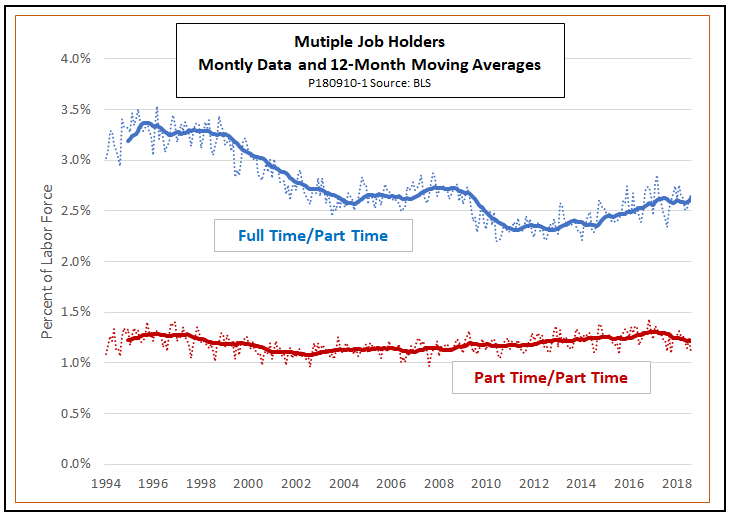When the latest report on the employment situation arrived last week, most commentary focused on jobs, the unemployment rate, or wages, but beneath the surface, there were many other numbers worth watching. One was a strong uptick in the number of people holding multiple jobs. Is that a good sign, or a bad one?
The idea that multiple job holders are a sign of crisis is supported by analysists like Komal Sri-Kumar, who writes in Business Insider that:
In a robust economic recovery, the number of full-time workers should be rising, and the number of workers employed part-time or holding multiple jobs, should decline. The rise in the number of multiple job holders is troubling, and is yet another signal that there is still slack in the labor market.
Yet, if we look at the data, the rise in multiple jobholders looks less dire. Not every multiple jobholder is a hardship case. According to a BLS survey, 25.6 percent of such workers say they needed the job to meet regular expenses or pay off debt, but another 21.3 percent want the job itself, perhaps to gain experience or get a foothold in a new business. Others say they wanted the extra income without saying why, maybe just to buy a fancier car.
What’s more, it turns out that different categories of multiple jobs give different signals regarding the health of the labor market. As the following chart shows, the most numerous category – people who hold a full-time job plus a part-time job – is procyclical, rising in good years and falling in bad. The correlation with the unemployment rate is -0.5. On the other hand, workers with two or more part-time jobs show little relation to the economic cycle, having a correlation of just 0.02 with unemployment.
In short, the story of multiple job holders is a nuanced one. On the one hand, we could say that two-job workers are a sign of “hardship” in the sense that if wages everywhere were higher, maybe they would not need to run up as much debt or take second jobs to pay it off. However, it does not fit Sri-Kumar’s belief that rising FT/PT jobholders are a sign of economic weakness. Rather, the full-time/part-time pattern, at least, is a sign of strength. It is the robust labor market that gives workers a chance to pay off some debt before the next downturn comes, at which point the opportunity for a second job might disappear altogether.
